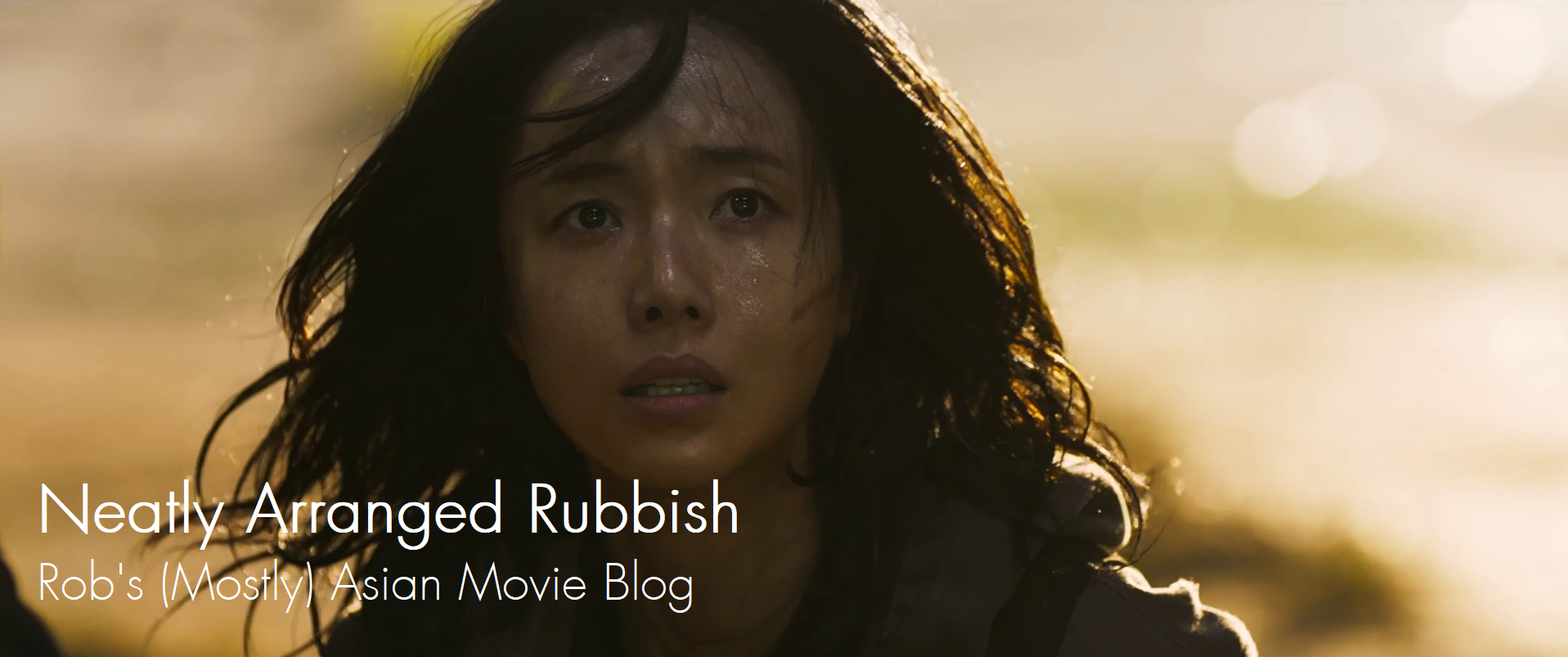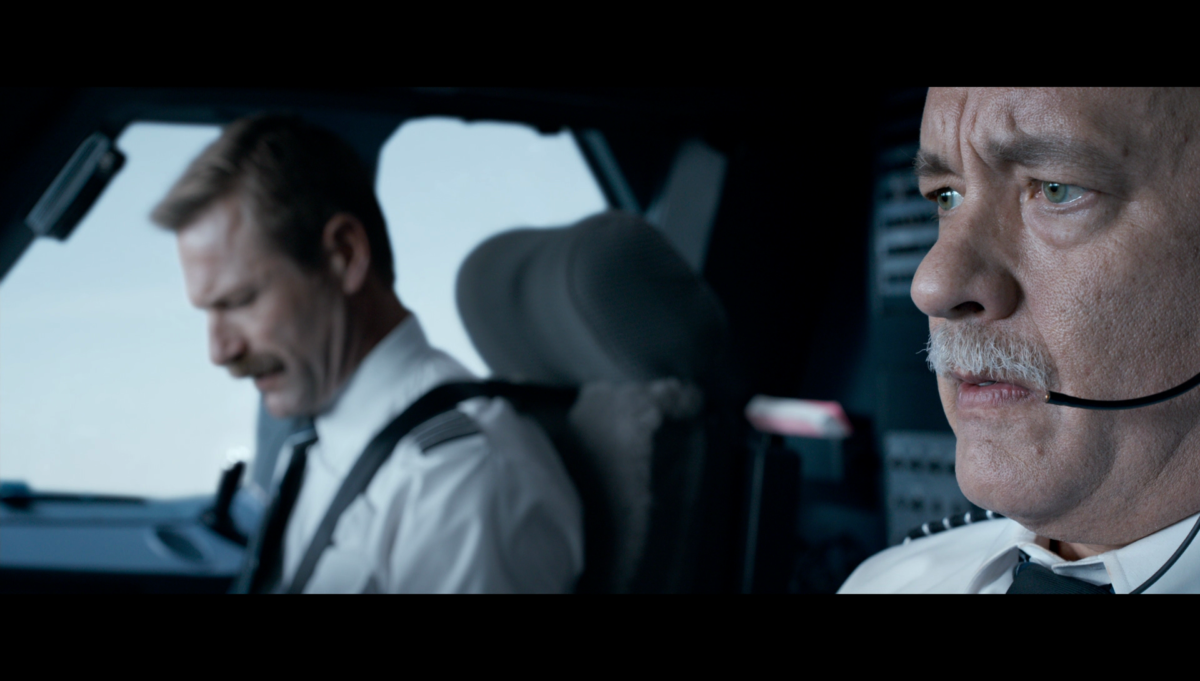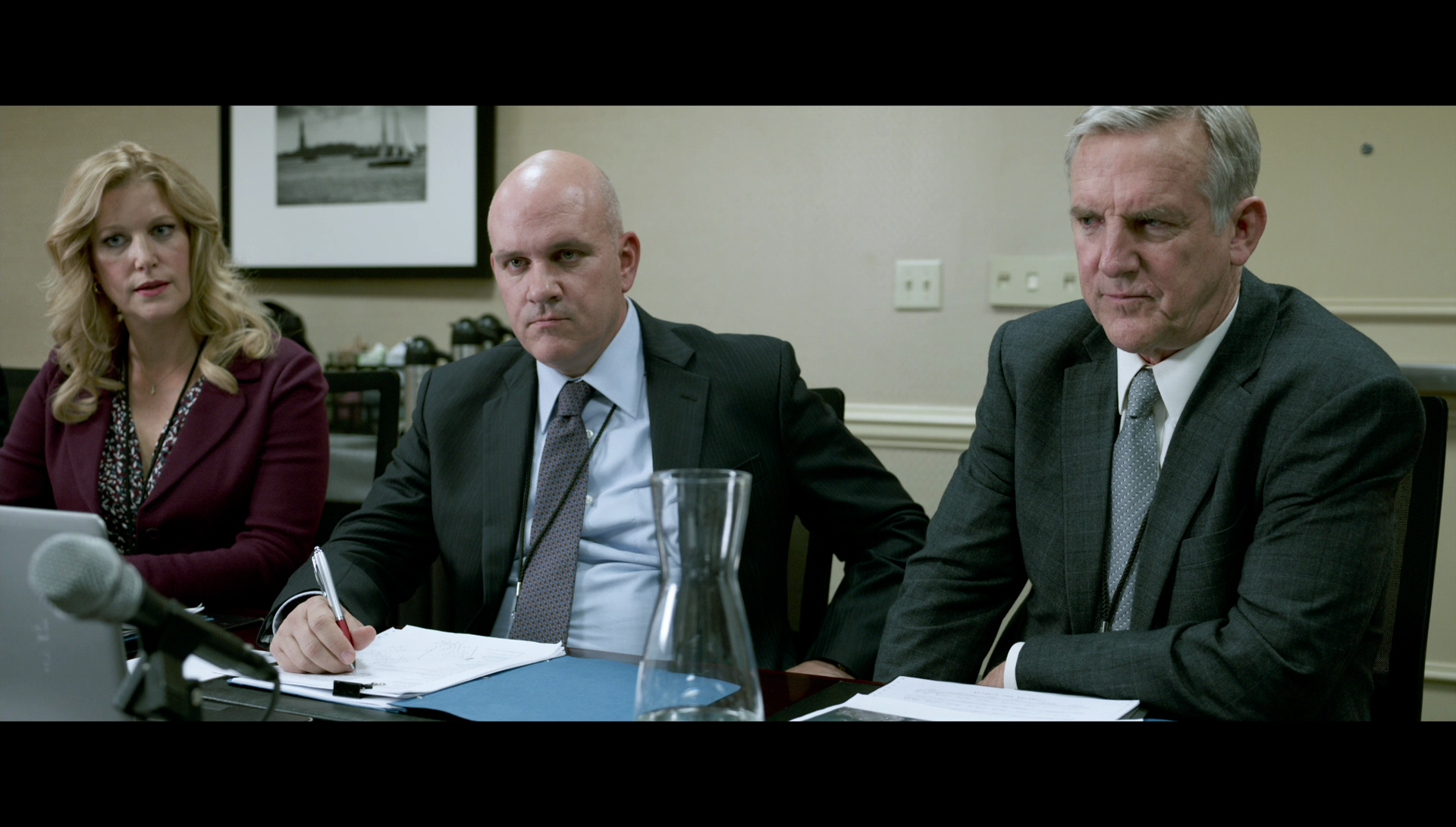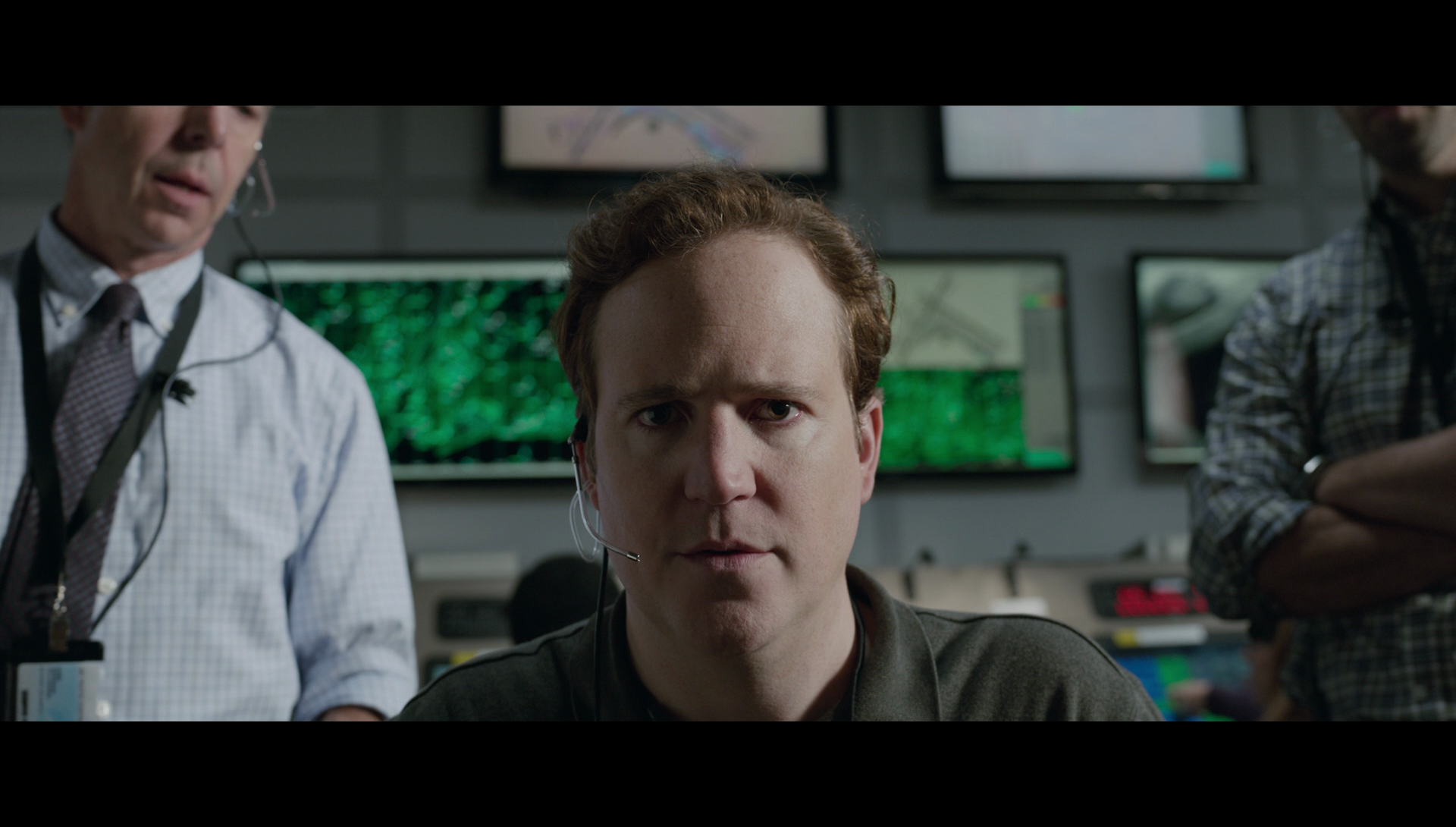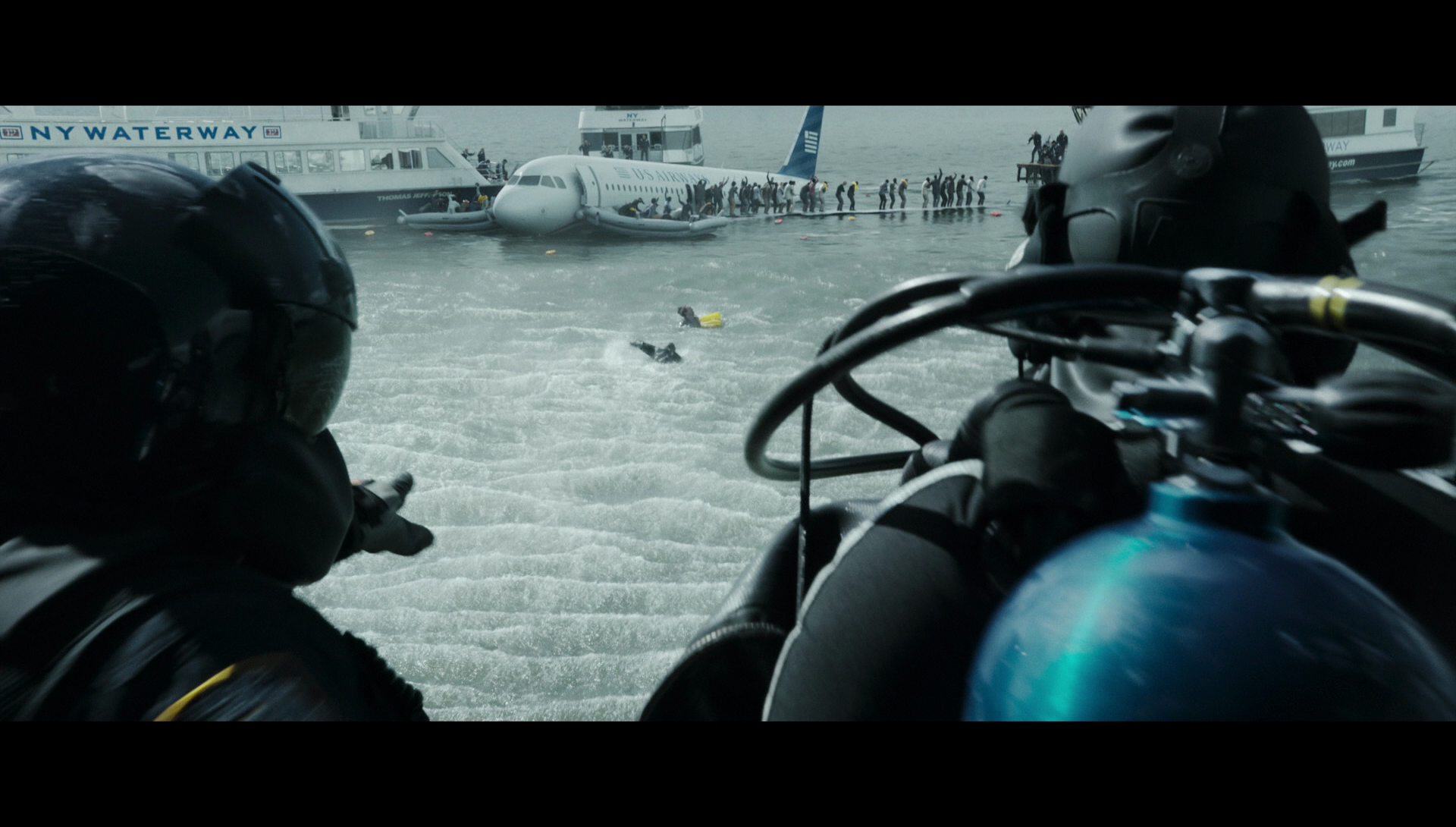Last Updated on October 6, 2020 by rob
In the immediate aftermath of a miraculous landing by a crippled aircraft in New York’s Hudson river its captain Chesley ‘Sully’ Sullenberger (Tom Hanks) finds himself acclaimed as a hero for saving the lives of all onboard. But an official investigation questions his decision to make a water landing when all their computer simulations suggest a return to the airport would have been the safest option. With his career and reputation on the line did Sully make the right decision in trusting his instincts or did he recklessly endanger the lives of his passengers and crew?
This true life tale of the so called ‘Miracle on the Hudson’ – in which minutes after takeoff a US Airways Airbus with 155 lives on board lost both engines after a bird strike and forced the plane’s captain into an emergency landing in the middle of the Hudson river – works as both an impressionistic portrait of a man caught in a media firestorm and of someone whose entire life appears to have been preparing him for precisely such a moment. Eastwood’s direction, Blu Murray’s editing and Hanks’ performance all combine to make it feel as if we’re inside Sully’s head in the bewildering aftermath of an event that has turned his world upside down. One senses the disorientation he feels at being kissed, hugged and called a hero by complete strangers. We feel Sully’s distress as the initial evidence from the crash investigation indicates his landing in the river was the wrong decision.
As with another of Eastwood’s impressionistic portraits of troubled souls – 1988’s magnificent Charlie Parker biopic Bird – the film’s structure is appropriately non-linear. The film jumps back and forth in time, replaying the disaster from multiple perspectives – that of Sully and his co-pilot Jeff Skiles (Aaron Eckhart), the cabin attendants, assorted passengers – with each new perspective adding to the whole. When we get to the final flashback in which we see the entire event (just 208 seconds from accident to landing) from the viewpoint of Sully it’s as if we’re in a Vulcan mind meld with him, sharing exactly what’s going through his mind, evaluating the options, seeing each one closed off as the devastating nature of the accident becomes clear and realising that the only option is to put the plane down in the freezing winter waters of the Hudson.
It’s like participating in the putting together of a cinematic jigsaw and what unifies all the pieces, the theme of Todd Komarnicki’s superb script, is the clash between Sully’s human instinct and the thing we’ve all come to detest in our modern age; the emphasis on rules, process, protocol and procedure which conspire to treat human initiative as A Bad Thing.Hanks gives a superbly subtle performance here and makes the character’s ordinariness a virtue. It’s that very quality, which seems in such short supply today, that makes Sullenberger – both the character and the man – so admirable. Variety contributor Owen Gleiberman wrote a great piece about this entitled The Beauty of ‘Sully’: How Clint Eastwood Turned Chesley Sullenberger Into a Countercultural Hero which I highly recommend reading.
As Sully’s co-pilot Jeff Skiles the excellent Aaron Eckhart comes across as a coil of nervous energy, a man unfailingly loyal to Sully and possessed of a delightful sense of humour. He’s the perfect counterbalance to his straight arrow captain and the moment when Sully tells him that they landed the plane together feels so gracious, so richly deserved, it packs a huge emotional wallop. Laura Linney is also effective as Sully’s harassed wife – we only ever see her in short dialogue scenes on the phone with her husband but the actress gets the emotional temperature of each scene, especially her first one, spot on – and there are nice thumbnail sketches from the actors playing the passengers. I was also especially impressed by Ann Cusack, Jane Gabbert and Molly Hagan as the flight attendants on board the stricken airliner. They’re only in a small number of scenes but completely convincing in their professionalism and chemistry with each other.
The biggest and best surprise of all though is a scene stealing performance from actor Patch Darragh as real life air traffic controller Patrick Harten. He was the man who took Sully’s mayday call that cold January day and tried to guide him to a nearby airport. When radio contact was lost and all reports indicated the plane was heading for the water, Harten – knowing full well that planes don’t survive water landings – blamed himself for what he thought was a catastrophe. Darragh has the task of conveying both the professionalism of his character and his emotions as the true scale of the disaster gradually becomes apparent. That he does so in little more than a few minutes of screen time is seriously impressive. It’s a great thing in a movie like this to watch the big stars doing their thing when some little character actor you’ve never heard of comes along and in what amounts to little more than an extended cameo blows you away. That’s what this guy achieves here. Nice one, Patch.
Sully is yet another brilliant example of Eastwood’s fondness for working in genre, for remaining faithful to what viewers expect from a particular type of movie while subverting the formula in unusual ways. For example whilst it’s nominally a disaster movie the soap opera subplots that are so much a characteristic of the genre are kept well at bay here. The handful of passengers that we do get to know have backstories sketched in with admirable brevity and economy. Most audaciously is that for a disaster movie this is really an anti-disaster movie. Nobody dies and everybody’s saved and yet Sully still packs enormous tension and moments of sheer terror during the flight sequences because Eastwood handles the material with such understatement you never feel you’re being manipulated and thus the impact is all the greater.
A scene in which Sully is told how many survivors there are is staged with such gentleness, such kindness toward the characters on the part of its director, it is a marvel of subtlety and all the more powerful for it. Even as Sully suffers recurring nightmares of what could have happened (in one of the film’s most sobering moments an office worker watches from a window as a passenger jet flies low between New York’s skyscrapers and one senses exactly what he’s thinking), Eastwood’s film shows that if human beings have the capacity to turn the image of a jetliner over a skyscraper into something as obscene as 9/11 they equally have it in them to reconfigure such images into those of human triumph.
As one of the film’s characters adroitly observes, ‘It’s been awhile since New York had news this good – especially with an airplane in it.’ Like Eastwood’s tremendous Invictus (2009) this represents a vivid snapshot of a moment in time when a city and a country was reeling from a succession of bad news stories and needed inspiration. With the ‘Miracle on the Hudson’, it got what it needed. It’s also not hard to see what attracted Eastwood to the story. A tale of a man who trusted his instincts and in so doing triumphed over all the second guessers and armchair theorists directed by a filmmaker who has built one of the most astonishing careers in cinema on trusting his own instincts. It’s kind of a perfect combination.
